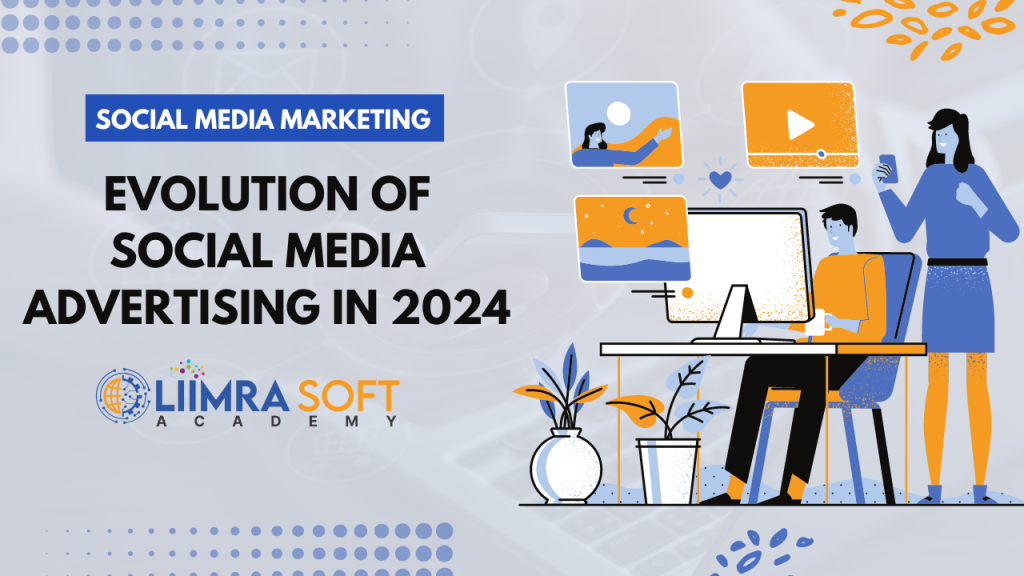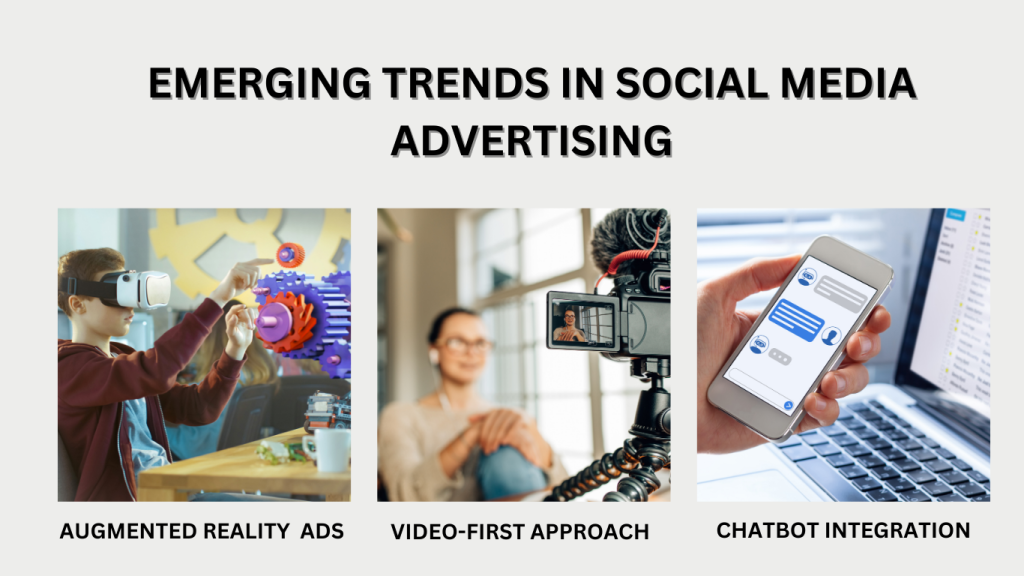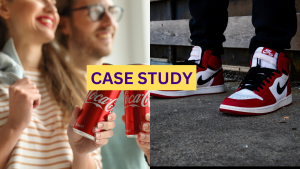Evolution of Social Media Advertising in 2024

Social Media Advertising Innovations:-
There have been big changes to Social Media Advertising recently. These changes have altered how businesses reach out to people. Instead of plain pictures, interactive stuff is now common. The world of Social media is constantly moving forward. This is due to new technology and how people are changing the way they shop.
Table of Contents
ToggleEvolution of Social Media Advertising:-
From static images to interactive content :-
No more are the times when social media ads just had pictures and words. Thanks to tech like HTML5 and CSS3, advertisers can make lively, engaging ads that connect with users. Whether with videos that draw you in, quizzes that you interact with, or games that make the experience fun, brands get creative to get their audience’s attention and make meaningful connections.
Rise of influencer marketing:-
In SMA there’s a big shift happening. It involves influencer marketing. No longer are brands just using traditional ads. They’re teaming up with influencers! This helps them market their goods and services. Using influencers who are well-known in their fields means that brands can reach new folks. They can also spark interest in a way that feels more real and believable.
Augmented Reality (AR) Ads:-
One of the thrilling advances in social media marketing is augmented reality (AR) use. Websites such as Snapchat and Instagram enable marketers to craft absorbing AR moments, letting users mix with products as it happens. From virtual tests to active filters, AR promotions are reshaping how companies present their items and boost sales.
Video-first approach:-
Videos are taking the lead on social media. Facebook, Instagram, and TikTok, Youtube especially, are filling feeds with video-based content. Due to this, brands are shifting focus towards videos in their ad game plans. They’re crafting catchy, shareable videos that connect with who they want to reach.
Chatbot integration:-
There’s a fresh trend ! It’s the use of Chabot’s in messaging apps like Facebook Messenger and WhatsApp. Through smart Chabots, brands can match shopping experiences to individual customers. They can offer help and even make sales right there in the app. This makes buying simple and smooth for users.

Importance of Personalization in Social Media Ads:-
Personalization is now a key part of successful social media marketing. It lets businesses show custom-tailored ads to their viewers.
Targeted advertising :-
There’s so much information on social media these days. This gives advertisers the ability to aim their ads just right! They can look at many factors like age groups, hobbies, or actions. Brands can pinpoint who to talk to, what to say, and when to say it. This really boosts their ad power!
Dynamic ad content :-
Not only does targeting play a role, but personalization also keys into the very substance of social media ads. With dynamic ad content, brands can craft highly tailor-made ads. These ads change, meshing with each user’s likes and actions. This boosts involvement and prompts more sales.
Impact of Artificial Intelligence (AI) in Social Media:-
The role of Artificial intelligence (AI) in social media is growing. It’s helping brands automate several parts of their ads. This is creating new ways to improve and expand.
Automated ad creation :-
Tools that use AI, like automatic ad creators and content makers, are making it easier to produce and share advertisements on social media. This lets brands create great ads in big numbers with little human help.
Predictive analytics for ad performance :-
Ad-makers are finding a friend in AI-driven analysis equipment. They’re learning a lot about how social media ads perform, which isn’t just interesting — it helps them tweak campaigns on the spot and get more bang for their buck.
Challenges and Opportunities in Social Media Advertising 2024 :-
While sma presents numerous opportunities for brands to connect with their audience, it also comes with its fair share of challenges.
Ad fatigue :-
With more and more ads filling up social media platforms, folks are getting better at ignoring them. This scrolling past causes what we call ad fatigue. To fight this, brands should aim at crafting meaningful and exciting content. Instead of getting in the way, it should enhance the user’s time on the platform.
Regulatory hurdles :-
Changes happen all the time in the world of social media ads. Rules and guides get updated often. There are laws about keeping information private and rules about making ads clear. Brands have to keep up-to-date and follow the rules to prevent breaking them and hurting their image.
Growth of niche platforms :-
The growth of specialized social media platforms is opening new doors for brands and Influencer-marketing. These platforms catered to specific interests and groups, give brands fresh ways to tap into laser-focused audiences. Even so, brands have to change up their advertising game. They need to wisely pick their platforms and spread their bets. This way, they amplify their reach and make a larger splash.
Case Studies of Successful Campaigns :-
Coca-Cola’s personalized ads :-
Coca-Cola shines as a model of smart use of personal touches in their social media ads. They make ads that really speak to each person’s likes and way of life. This smart move has made people interact more and boosted their love for the brand.

Nike’s use of AR in advertising :-
How cool is it that Nike uses Augmented reality (AR) in their ads? Super cool, particularly because it works! You can use your phone camera to try on shoes and clothes virtually. Nike provides a shopping experience that is fun, interactive, and gets people pumped. It does more than that, though. It increases the rate at which folks choose to buy.
Conclusion :-
So, here’s the deal. Social media ads they’re always changing. Why? Because tech keeps advancing, people’s habits change, and new trends pop up. Cool stuff like augmented reality and videos are game-changers. Plus AI, it can make ads super personal. This means brands can make ads that really click with people and get results. That’s the future, folks.
Are you ready to unlock the world of digital marketing? Explore our comprehensive course offerings and take the first step towards mastering the digital landscape. Click here to learn more about our courses
FAQs on Social Media Advertising Innovations
Augmented reality (AR) ads, video-first approach, and chatbot integration are some of the key trends shaping the future of social media advertising.
Brands can leverage personalization by targeting their ads based on demographics, interests, and behaviors and creating dynamic ad content that adapts to individual preferences.
AI enables automated ad creation and predictive analytics for ad performance and enhances targeting and personalization capabilities in social media advertising.
Ad fatigue, regulatory hurdles, and the growth of niche platforms are some common challenges brands face in social media advertising.
Coca-Cola’s personalized ads and Nike’s use of AR in advertising are examples of successful social media advertising campaigns that have driven engagement and increased brand loyalty.
